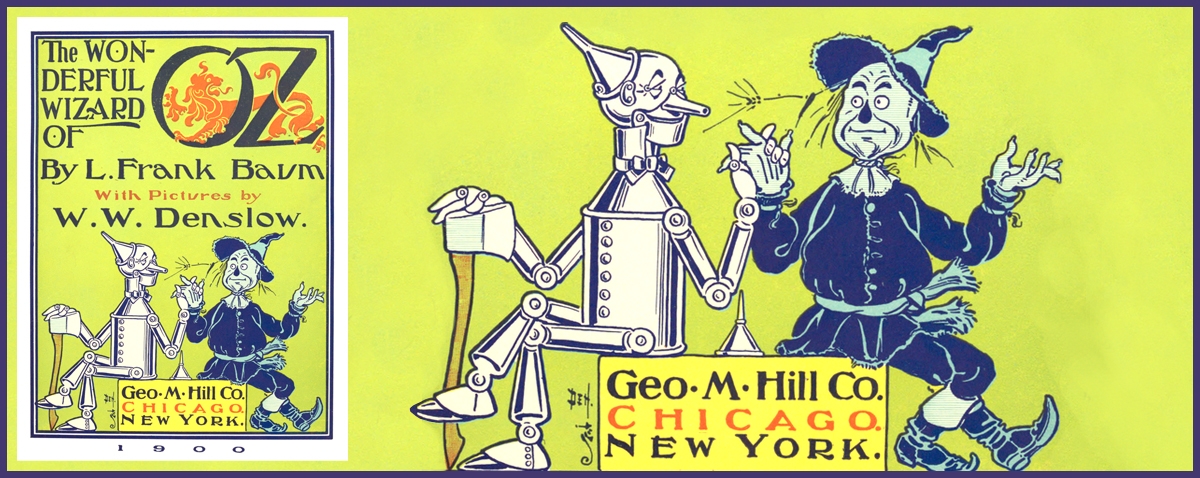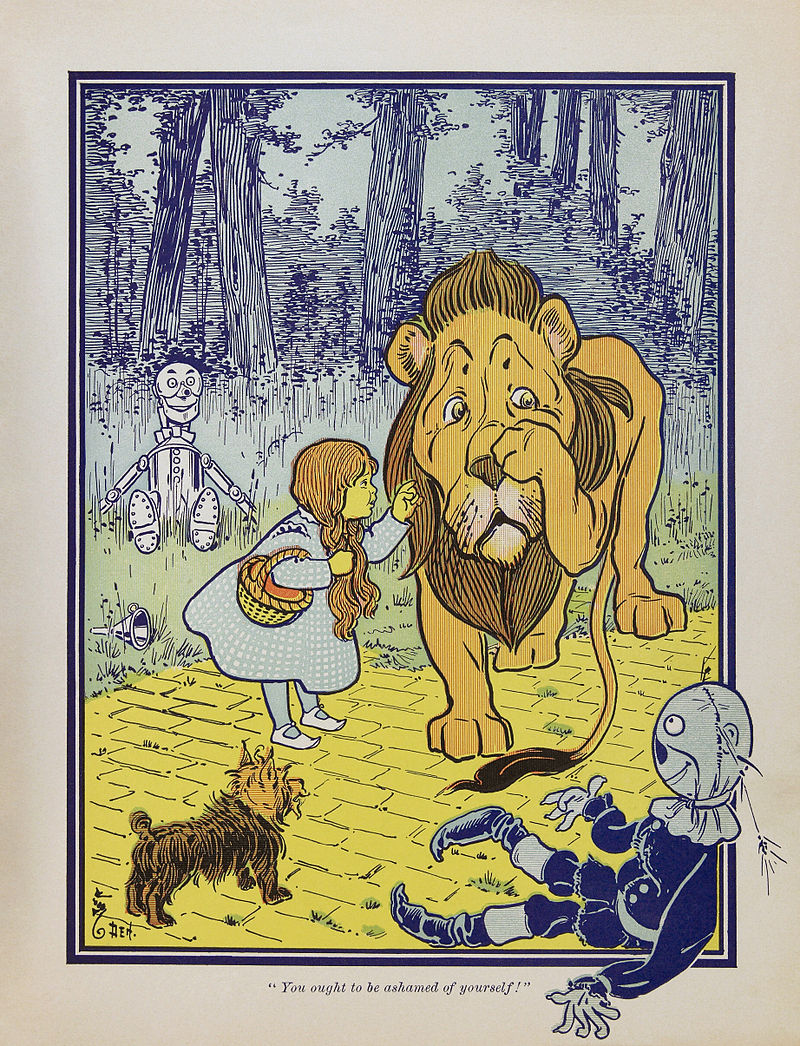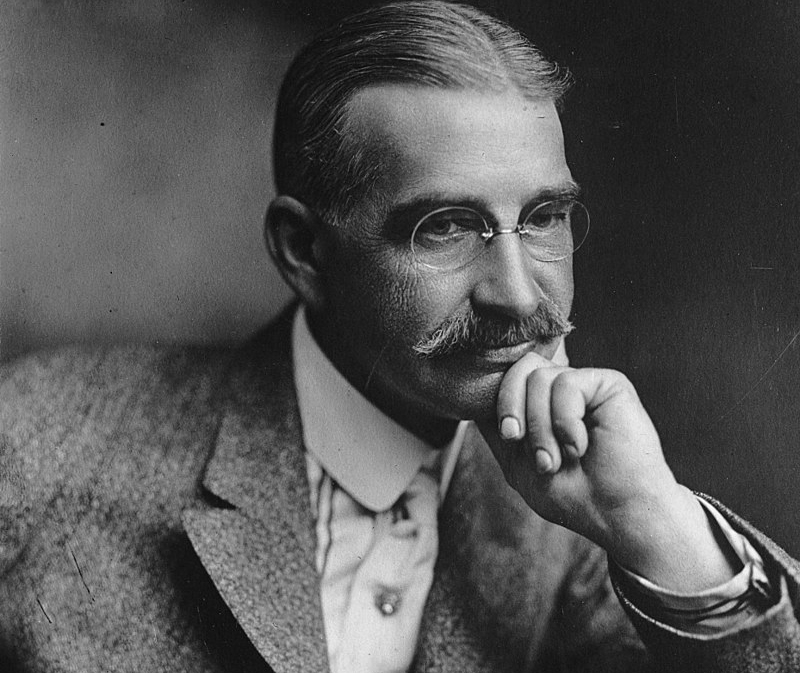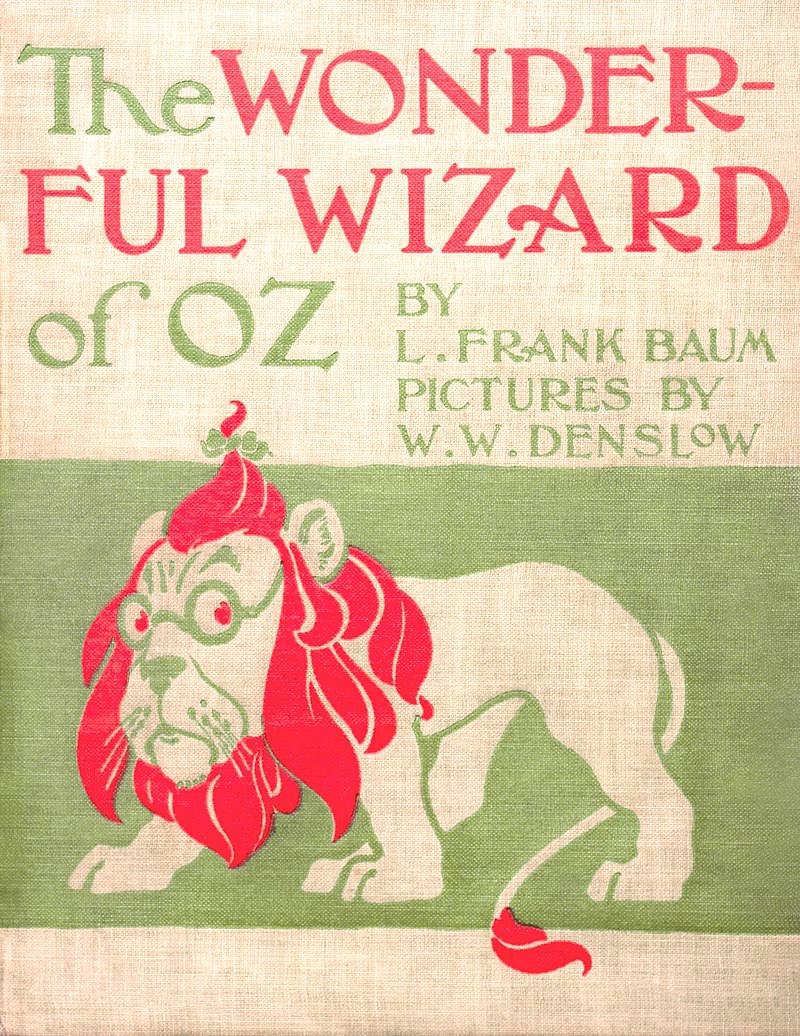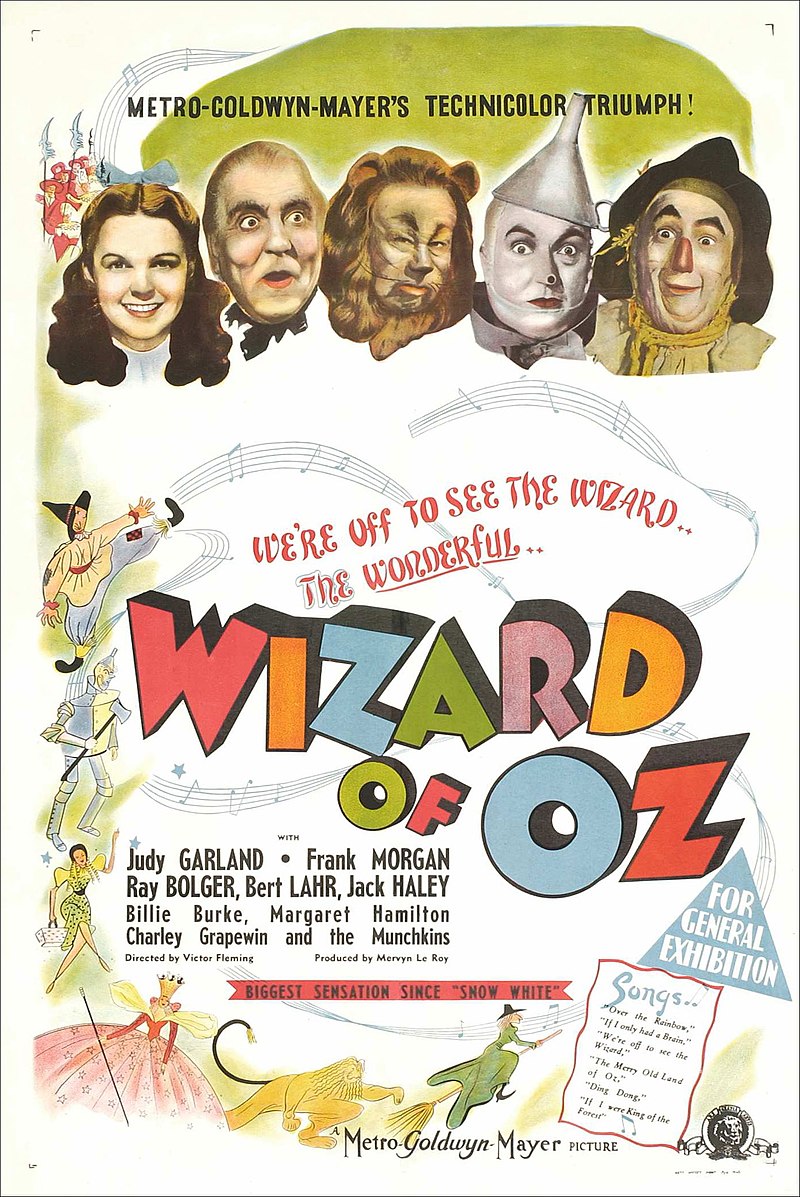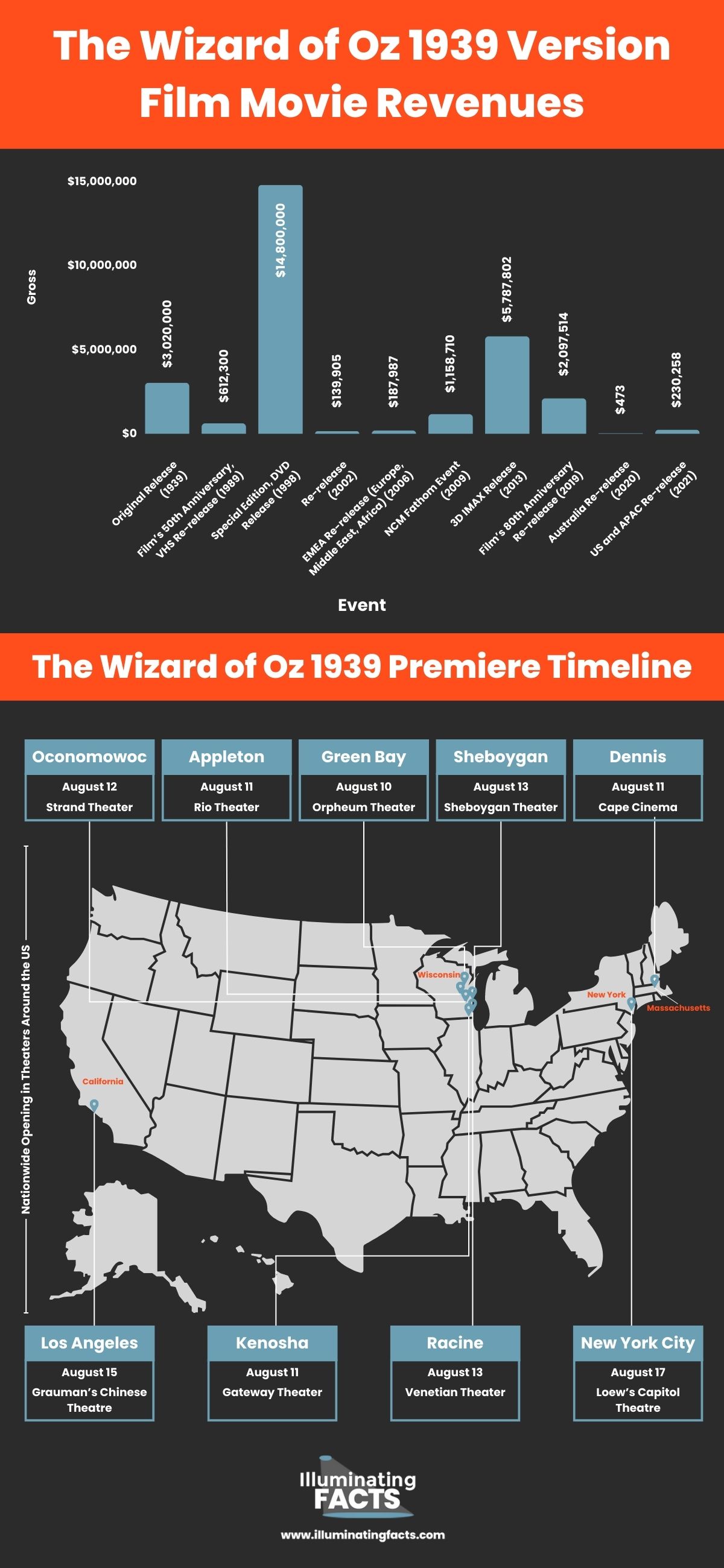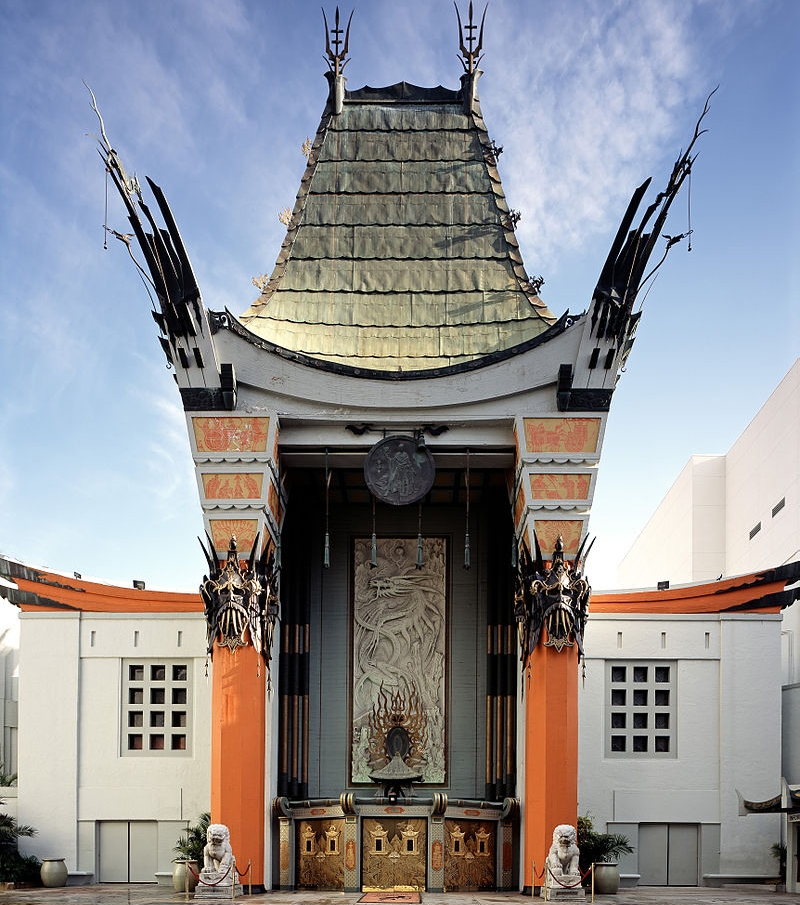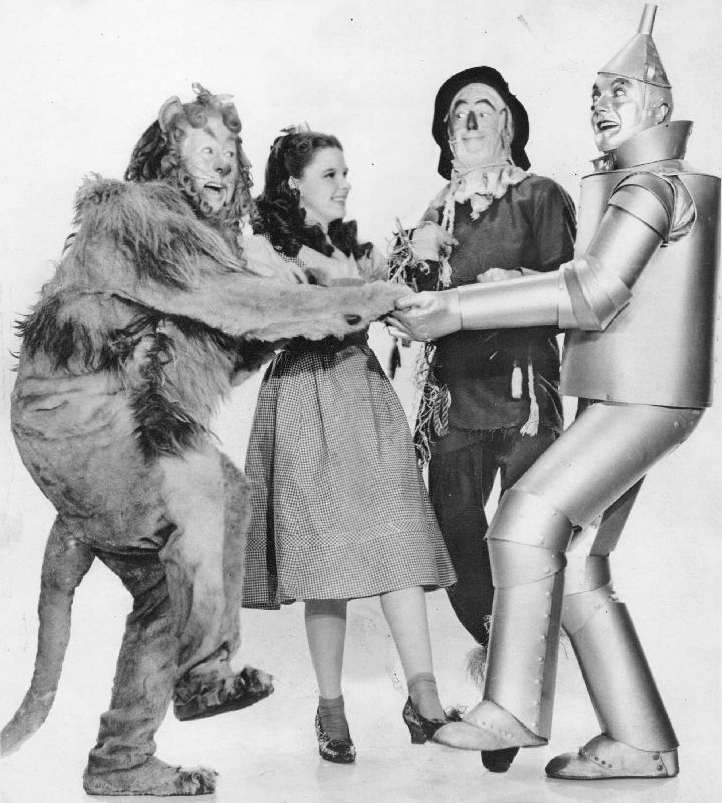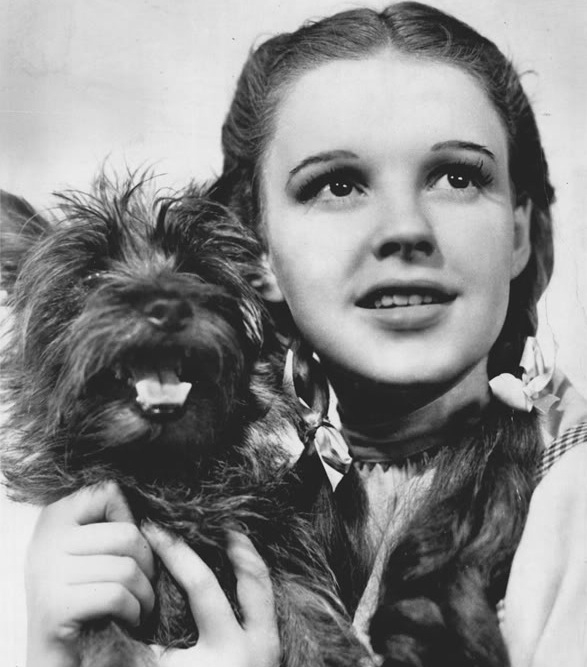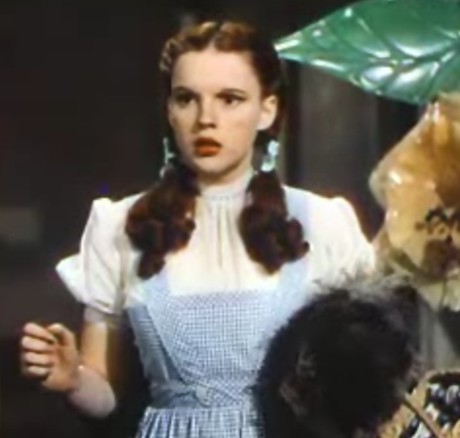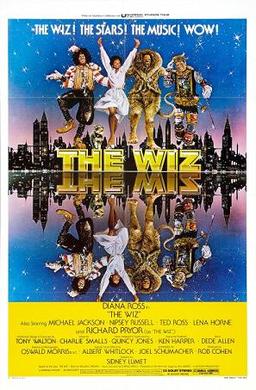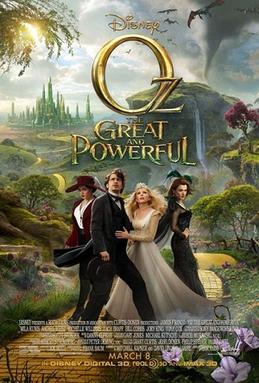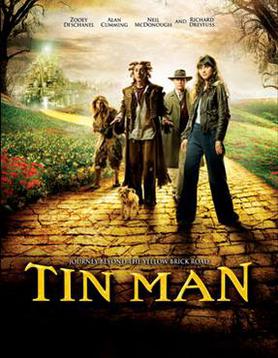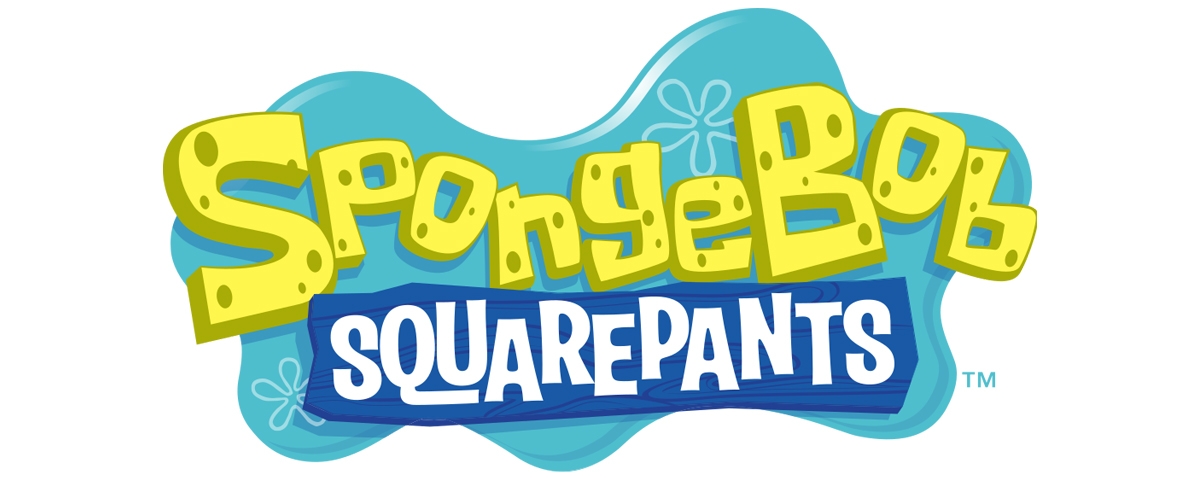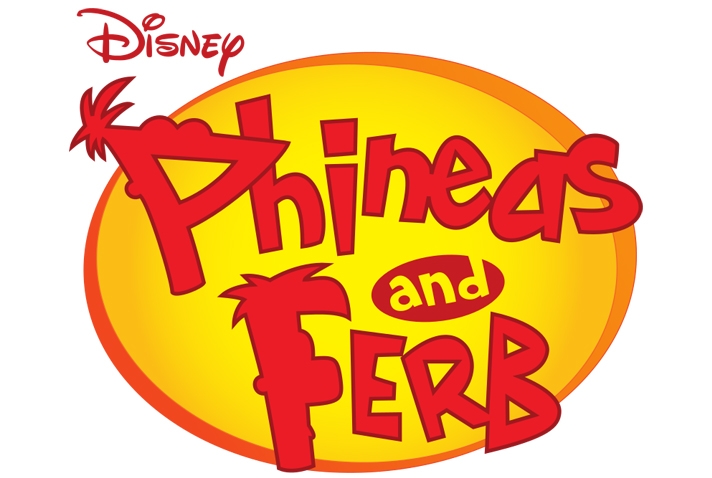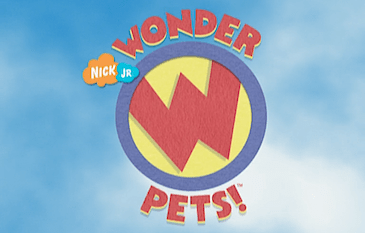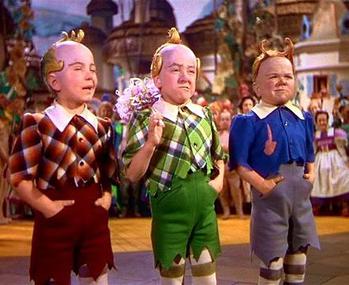Table of Contents
For over seventy years, The Wizard of Oz has captured the imaginations of people all over the world. Frank Baum’s fantastical story about a girl who is transported to a strange land where she must find her way back home fhas been translated into dozens of languages and adapted into several different mediums, including stage plays, television shows, and of course, movies. But what makes this story so captivating? Why do people continue to love this story after all these years?
Background
The Wizard of Oz is a popular children’s novel written by L. Frank Baum and first published in 1900. The book was an instant success, selling three million copies by the time of Baum’s death in 1919. It has been translated into different major languages and became America’s greatest and best-loved homegrown fairytale. [1]
The story is about the adventure of a young girl named Dorothy Gale who is transported to the magical land of Oz after being hurled by a tornado. Dorothy embarks on a journey to find the Wizard of Oz, who she believes can help her return home to Kansas. In her journey, she meets a lot of friends, including a Scarecrow who wants a brain, a Tin Woodman who wants a heart, and a Cowardly Lion who wants courage.
With the help of her new friends, Dorothy eventually reaches Emerald City, where the Wizard of Oz resides. The Wizard appears to be a powerful and frightening figure, but Dorothy soon discovers that he is nothing more than a fraud. With her friends’ help, she’s able to expose the Wizard and return home to Kansas.
History of The Wizard of Oz
The Wizard of Oz has a long and fascinating history, both in the United States and abroad. The story was originally published as a children’s book, but it quickly gained popularity with adults as well.
In 1903, the first stage adaptation of The Wizard of Oz opened on Broadway. [2] The play was a success and toured throughout the United States for several years.
The Wizard of Oz was first adapted into a film in 1910, but it was not a commercial success. It’s known as the earliest surviving film based on the classic novel of L. Frank Baum. However, Baum did not have any direct input in this film made by the Selig Polyscope Company under a contractual obligation.
During this time, Baum was mandated to allow Selig Polyscope Company to use his novel for film adaptation and was obliged to do so since he was bankrupt at the time. His bankruptcy was caused by “The Fairylogue and Radio-Plays” – an early attempt to bring his novels to film in 1908. However, the Fairylogue and Radio-Plays significantly failed to produce money to compensate for the production costs, leaving Baum bankrupt.
In 1939, the story was adapted into the iconic film starring Judy Garland as Dorothy. This version of the story is the one that is most widely known and loved today.
The Wizard of Oz has also been adapted into a television series, an animated film, and several direct-to-video movies. In addition, the story has been referenced and parodied in countless other works of popular culture.
Books
The Wizard of Oz was initially a children’s novel, but it has since been adapted for all ages. In addition to the original book, there are several other books that have been inspired by the story, including novels, picture books, and activity books.
The “famous forty” are the forty Oz books that were written by L. Frank Baum and his successors. [3] These books are considered to be canonical and are often used as reference material for other Oz-related works.
The most famous of these is The Wonderful Wizard of Oz, written by L. Frank Baum and first published in 1900. This is the novel that started it all, and it is still beloved by readers of all ages.
Interestingly, there are several other books in the Oz series that were written by Baum. These books follow the further adventures of Dorothy and her friends in the land of Oz. While they are not as well-known as the original book, they are still interesting reads for fans of the story.
Here are the original Oz books written by Baum:
- The Wonderful Wizard of Oz (1900)
- The Marvelous Land of Oz (1904)
- Ozma of Oz (1907)
- Dorothy and the Wizard of Oz (1908)
- The Road to Oz (1909)
- The Emerald City of Oz (1910)
- The Patchwork Girl of Oz (1913)
- Tik-Tok of Oz (1914)
- The Scarecrow of Oz (1915)
- Rinkitink of Oz (1916)
- The Lost Princess of Oz (1917)
- The Tin Woodman of Oz (1918)
- The Magic of Oz (1919)
- Glinda of Oz (1920)
Most of Baum’s Oz books were published by Reilly & Britton – except for the first book, which was published by George M. Hill Company. After Baum’s death, his publisher, Reilly & Britton, solicited Ruth Plumly Thompson to continue the Oz series.
Thompson wrote an additional nineteen books in the series, which are as follows:
- The Royal Book of Oz (1921)
- Kabumpo in Oz (1922)
- The Cowardly Lion of Oz (1923)
- Grampa in Oz (1924)
- The Lost King of Oz (1925)
- The Hungry Tiger of Oz (1926)
- The Gnome King of Oz (1927)
- The Giant Horse of Oz (1928)
- Jack Pumpkinhead of Oz (1929)
- The Yellow Knight of Oz (1930)
- Pirates in Oz (1931)
- The Purple Prince of Oz (1932)
- Ojo in Oz (1933)
- Speedy in Oz (1934)
- The Wishing Horse of Oz (1935)
- Captain Salt in Oz (1936)
- Handy Mandy in Oz (1937)
- The Silver Princess in Oz (1938)
- Ozoplaning with the Wizard of Oz (1939)
After Thompson’s exceptional contribution to the Oz series, John R. Neill took over as the author. He wrote additional books, including:
- The Wonder City of Oz (1940)
- The Scalawagons of Oz (1941)
- Lucky Bucky in Oz (1942)
Jack Snow succeeded Neill and wrote two additional books:
- The Magical Mimics in Oz (1946)
- The Shaggy Man of Oz (1949)
In 1951, Rachel R. Cosgrove wrote the second to last book in the series:
1. The Hidden Valley of Oz (1951)
More than a decade later, Eloise Jarvis McGraw and Lauren McGraw Wagner wrote the last canonical book in the series:
2. Merry Go Round in Oz (1963)
After the famous completion of the famous forty, several other novels were written that were inspired by the Oz stories. These books are not considered to be canonical, but they are still interesting reads for fans of the series.
Some of these novels include:
- Yankee in Oz (1972) by Ruth Plumly Thompson
- The Enchanted Island of Oz (1976) by Ruth Plumly Thompson
- The Forbidden Fountain of Oz (1980) by Eloise Jarvis McGraw and Lauren Lynn McGraw
- The Wicked Witch of Oz (1993) by Rachel Cosgrove Payes
- The Runaway in Oz (1995) by John R. Neill
- Percy and the Shrinking Violet (1995) by Rachel Cosgrove Payes
- Spots in Oz (1997) by Rachel Cosgrove Payes
- The Rundelstone of Oz (2001) by Eloise Jarvis McGraw
Movies
Just like the books, there have been several different film adaptations of the Oz story. The most famous and well-loved adaptation is undoubtedly The Wizard of Oz (1939), which was a Judy Garland vehicle. This film is still shown on television regularly and is beloved by generations of fans.
Besides the iconic 1939 film, there are many other Oz-related movies that are worth checking out. Here’s a list of the most notable:
- The Wonderful Wizard of Oz (1910)
- The Patchwork Girl of Oz (1914)
- His Majesty, The Scarecrow of Oz (1914)
- The Magic Cloak of Oz (1914)
- The Wizard of Oz (1925)
- The Land of Oz (1932)
- The Wizard of Oz (1939)
- The Wonderful Land of Oz (1969)
- The Wiz (1978)
- Return to Oz (1985)
- Oz the Great and Powerful (2013)
These are the most famous and well-known examples of the Oz story being adapted into other mediums. However, there are a lot more examples out there for fans to enjoy.
The Popularity of the Movie
As mentioned earlier, The Wizard of Oz (1939 film) was an immensely popular movie when it was first released. It was so popular that it actually earned over three million dollars within its initial release. This was a significant feat at the time, and it helped to solidify The Wizard of Oz as one of the most popular movies of all time.
Production of the Movie
The movie was produced by Mervyn LeRoy and was distributed by Metro-Goldwyn-Mayer. The movie was originally released on August 25, 1939, and it was an instant hit with audiences. However, despite the film’s popularity in its initial release, the studio failed to made a significant profit due to the film’s high production costs. The film production of The Wizard of Oz had a budget of $2,777,000, and it only earned $3.02 million in revenue in its initial release.
Movie Sales
Since the initial release of The Wizard of Oz film in 1939, the movie has gone on to earn a total of $30 million in adjusted ticket sales. The film continued to gain popularity even after many years had passed, and it is now considered to be among the most popular movies of all time.
Here’s a list of The Wizard of Oz 1939 film’s worldwide sales since its initial release: [5]
| The Wizard of Oz 1939 Film Movie Sales | ||
| Year | Gross | Event |
| 1939 | $3,020,000 | Original Release |
| 1989 | $612,300 | Film’s 50th Anniversary, VHS Re-release |
| 1998 | $14,800,000 | Special Edition, DVD Release |
| 2002 | $139,905 | Re-release |
| 2006 | $187,987 | EMEA Re-release (Europe, Middle East, Africa) |
| 2009 | $1,158,710 | NCM Fathom Event |
| 2013 | $5,787,802 | 3D IMAX Release |
| 2019 | $2,097,514 | Film’s 80th Anniversary Re-release |
| 2020 | $473 | Australia Re-release |
| 2021 | $230,258 | US and APAC Re-release |
Places that Played The Wizard of Oz
Interestingly, The Wizard of Oz 1939 film gained international success during the early stages of its release. The movie was shown in theaters worldwide, mainly in major cities.
Prior to its nationwide release on August 25, 1939, the film had a series of premieres within the US. The film had its soft launch in Orpheum Theater – Wisconsin on August 10. [6] This move was made to gauge the audience’s response to the movie before releasing it in other parts of the States.
After the said event, the film had its official premiere in Grauman’s Chinese Theater – Hollywood on August 15, followed by the nationwide release on August 25.
Here’s a table that shows the timeline of the film’s premiere dates and locations:
| The Wizard of Oz 1939 Premiere Timeline | ||
| Date | City | Theater |
| August 10 | Green Bay, Wisconsin | Orpheum Theater |
| August 11 | Kenosha, Wisconsin | Gateway Theater |
| August 11 | Dennis, Massachusetts | Cape Cinema |
| August 11 | Appleton, Wisconsin | Rio Theater |
| August 12 | Oconomowoc, Wisconsin | Strand Theater |
| August 13 | Sheboygan, Wisconsin | Sheboygan Theater |
| August 13 | Racine, Wisconsin | Venetian Theater |
| August 15 | Los Angeles, California | Grauman’s Chinese Theatre |
| August 17 | New York City, New York | Loew’s Capitol Theatre |
| August 25 | Nationwide Opening in Theaters Around the US | |
Awards and Nominations
Because of the film’s undeniable success, it has garnered a large number of awards and nominations over the years. The Wizard of Oz is a recipient of several awards and nominations that cemented its spot as one of the best classic films in history. Here are some of the most notable accolades that the film has received: [7]
- Winner: 1940 Oscar Awards for Best Music, Original Song
- Nominee: 1940 Oscar Awards for Best Picture, Best Art Direction, Best Effects, Special Effects
- Winner: 2006 Saturn Awards for Best Classic Film DVD Release
- Nominee: 1939 Palme d’Or
- Nominee: 2006 DVDX Award for Overall DVD, Classic Film
- Winner: 1939 Golden Train Award for Outstanding Artistic Contribution
- Winner: 1939 Queer Train Award for Best Feature Film
- Nominee: 1939 Audience Award for Best Actress and Best Film
- Nominee: 1939 Golden Train Award for Best Film
- Nominee: 2013 IGN Award for Best Movie Blu-Ray
- Winner: 2009 Sierra Award for Best DVD (Packaging, Design, and Content)
- Winner: 1989 National Film Registry
- Winner: 2021 OFTA Film Hall of Fame for Songs “Over the Rainbow” and Character “Judy Garland”
- Winner: 1997 OFTA Film Hall of Fame for Motion Picture
- Nominee: 2014 Satellite Award for Best Overall Blu-Ray
- Winner: 2009 Satellite Award for Best Youth DVD
- Nominee: 2009 Satellite Award for Best Classic DVD, Best Overall Blu-Ray Disc, and Best Overall DVD
- Winner: 2005 Satellite Award for Outstanding Classic DVD
- Nominee: 2005 Satellite Award for Outstanding Overall DVD, Outstanding DVD Extras, and Outstanding Youth DVD
- Winner: 1985 Jackie Coogan Award
Main Characters in The Wizard of Oz
The Wizard of Oz is rich in characters, both main and supporting. The various characters in the series give life to the entire story, and some of them have gained recognition in popular culture. Here are the main characters in the film and a brief description of each:
- Dorothy Gale is the central protagonist of the film. She’s a young girl who lives with her Aunt Em and Uncle Henry on a farm in Kansas. One day, a powerful tornado hits her farm, and Dorothy is transported to the land of Oz.
- Scarecrow is one of Dorothy’s companions in her journey to find the Wizard of Oz. He is a straw man who desires a brain. He is often portrayed as clumsy and foolish, but he is also shown to be brave and loyal.
- Tin Man is another one of Dorothy’s companions in her journey to find the Wizard of Oz. He is a man made out of tin who desires a heart. He is often portrayed as being emotionless, but he is also shown to be kind and compassionate.
- Cowardly Lion is the final member of Dorothy’s group of companions. He is a lion who desires courage. He is often portrayed as cowardly, but he is also shown to be brave and noble.
- The Wicked Witch of the West is the main antagonist of the film. She is the ruler of Winkie Country and is determined to stop Dorothy from reaching the Wizard of Oz.
- The Wizard of Oz is a mysterious character who is the ruler of the land of Oz. He is often portrayed as being powerful and wise, but he is also shown to be a fraud.
- Glinda is the Good Witch of the South who helps Dorothy on her journey to find the Wizard of Oz. She is the most powerful sorceress in the Land of Oz and is known for her kindness and compassion.
- Uncle Henry is Dorothy’s uncle who lives with her on the farm in Kansas.
- Aunt Em is Dorothy’s aunt, who also lives with her on the farm in Kansas.
- Toto is Dorothy’s pet dog who accompanies her on her journey to find the Wizard of Oz.
Cultural Impact of the Characters
The Wizard of Oz has had a significant impact on our culture since its release. The characters in the film have become iconic and are often referenced in other works of popular culture.
The main characters have been referenced in works of popular culture, such as The Simpsons, Family Guy, and South Park. They’ve also been featured in numerous toys, books, and Halloween costumes.
Family Guy is one of the TV series that are fond of using the Wizard of Oz characters as a source for their jokes. In one episode, “Scarecrow” is one of the main characters. The episode is a parody of the film and includes several references to the original story.
Another Family Guy episode showcased the four main characters – based on their original looks from the book, not from the movie. This is due to MGM’s refusal to use the movie characters in the TV series. [8]
The Simpsons is another TV series that has referenced the Wizard of Oz characters on numerous occasions. In one episode, “Homer the Great,” Homer said that he would follow the “Yellow Brick Road.” This road is known as one of the most iconic places in the book and movie. [9]. Besides this, there are many other Simpson episodes referenced from The Wizard of Oz.
In 1973, Dunkin Donuts released the Munchkins, which were named after the small people in The Wizard of Oz called “Munchkins.” The donuts were miniaturized versions of their regular donuts. They were so successful that Dunkin Donuts still sells them today. [10]
Besides food and TV shows, The Wizard of Oz also has a significant impact on fashion. In 2005, Vogue had a special photoshoot in honor of L. Frank Baum’s birthday. This shoot featured Keira Knightley as Dorothy, showcasing the iconic ruby red slippers from the film. [11]
Iconic Elements in the Movie
The Wizard of Oz is known for its many iconic elements, such as the Emerald City, the Yellow Brick Road, and the ruby red slippers. [12] These famous movie elements helped shape the film’s legacy and have been referenced in many other works of popular culture.
Emerald City
The Emerald City is described as the capital of the Land of Oz and is known for its green color. All of the buildings, streets, and even the sky are green. The Emerald City is also home to the Wizard of Oz.
The Emerald City is usually interpreted by scholars as a metaphor for Washington, D.C., or the American government.
Yellow Brick Road
The Yellow Brick Road is a road that leads to the Emerald City. It is made out of yellow bricks and is one of the most iconic elements in the film.
The Yellow Brick Road is often seen as a symbol of hope and determination. It represents Dorothy’s journey to find the Wizard of Oz and her journey to return home.
Ruby Red Slippers
The ruby red slippers are probably one of the most iconic elements found in the film. They are a pair of red shoes that Dorothy wears throughout her journey. The ruby red slippers have been referenced in many other works in pop culture. The popularity of the slippers made them an essential part of any Dorothy-inspired costume.
Toto
Toto is Dorothy’s pet dog who accompanies her on her journey to find the Wizard of Oz.
Toto is often seen as a symbol of loyalty and companionship. He is also a symbol of the importance of animals in our lives.
Tornado
Dorothy’s journey in the Land of Oz started with a tornado. The powerful tornado hurls her house into the air, and Dorothy is transported to the land of Oz. The tornado is seen as a symbol of change and upheaval.
Critical Reception of the Movie
Because of the film’s popularity, it earned a lot of critical reception from movie critics and fans.
During the film’s initial release, it gained a lot of positive comments, mainly because of the use of color. The film was known as the one of the first movies to be released in color, and many people were amazed by the colors used in the film; since black-and-white films were the popular choice during that time. [13]
Because of its colored finish, movie critics often compared it to the animated film: Snow White and the Seven Dwarfs. They both used color in order to create a more visually appealing film. However, The Wizard of Oz was live-action while Snow White was animated. [14]
The film was also praised for its innovative use of special effects. The tornado scene was one of the most innovative scenes at that time. Many people were amazed by how realistic the tornado looked and felt. Because of the film’s innovative visuals at that time, it was nominated for an Oscar for Best Effects, Special Effects in 1940.
The Wizard of Oz was also praised for its music. The film’s score and songs were composed by Harold Arlen and E.Y. Harburg. Some of the most popular songs from the film are “Over the Rainbow,” “Ding Dong! The Witch is Dead”, and “We’re Off to See the Wizard.” These songs have been covered by many artists and have become classics.
Despite the film’s critical success, there are some people who didn’t enjoy the film. Some people found the film to have a poor sense of humor and bad casting. [15]
Others found the film to be too dark and scary for children. This often refers to the green-skinned witch, flying monkeys, destructive tornado, and other menacing elements found in the film. [16]
However, these negative comments didn’t stop the film from becoming one of the most popular and influential films of all time.
The Wizard of Oz Spin-Offs
Even after decades after the film’s release, The Wizard of Oz still remains popular in popular culture. There have been many spin-offs and adaptations of the film over the years.
Interestingly, this classic story remains a relevant part of our culture today.
The Wiz
The Wiz is a 1978 musical film that is based on the 1974 Broadway musical of the same name. The Wiz was an African-American retelling of The Wizard of Oz. The main character, Dorothy, was played by Diana Ross, while Michael Jackson played the Scarecrow.
The Wiz was a critical and commercial failure. It only earned $21 million at the box office with a high production cost of $24 million. However, The Wiz has gained a cult following over the years. It is now considered to be one of the most important films in African-American cinema.
The Wiz was nominated for four Academy Awards, including Best Art Direction, Best Cinematography, Best Costume Design, and Best Adaptation Score.
Besides the film’s negative criticisms, it also gained some positive reviews. Many people praised the film for its use of color, visuals, and music. The Wiz was also noted for its all-black cast, which was rare during that time.
Furthermore, the film showcased Michael Jackson’s talent as a musician and actor. This was one of Jackson’s first film roles, and he received critical acclaim for his performance as the Scarecrow.
Oz the Great and Powerful
Oz the Great and Powerful is a 2013 film that is a prequel to the original Wizard of Oz film. The film stars James Franco, Mila Kunis, Rachel Weisz, and Michelle Williams.
The film follows the story of Oscar Diggs, a small-time circus magician who is transported to the Land of Oz. He is then caught in the middle of a battle between three witches: Theodora, Evanora, and Glinda.
Oz the Great and Powerful was a box office success, earning over $493 million dollars worldwide.
The Muppets’ Wizard of Oz
The Muppets are a popular group of puppets created by Jim Henson. They are known for their appearances on Sesame Street, The Muppet Show, and several movies.
In 2005, they released a made-for-TV movie called The Muppets’ Wizard of Oz. The film starred Ashanti, Queen Latifah, and David Alan Grier.
Tin Man
Tin Man is a 2007 TV miniseries that was loosely based on The Wizard of Oz. The film starred Zooey Deschanel, Alan Cummings, and Neal McDonough.
The series followed the story of DG, a waitress who was transported to the O.Z. (Outer Zone). She then goes on a journey to find her way back home with the help of Glitch, Raw, and Cain.
The series was a rating success, averaging 6.3 million viewers during its timeslot. [17]
SpongeBob SquarePants
There is one episode in SpongeBob SquarePants, a popular Nickelodeon cartoon, that is based on The Wizard of Oz. In this 1999 episode, SpongeBob and Patrick go to see Mr. Magic, a magician who ends up being a fraud.
Phineas and Ferb
Phineas and Ferb also have their share of Wizard of Oz references. In the 2007 episode “The Wizard of Odd,” Phineas and Ferb built a contraption to wash their house quickly. However, the machine spins very fast while Candice is still inside, and she ends up in another dimension.
In this dimension, there are references to The Wizard of Oz, such as the “Emerald City,” “Yellow Brick Road,” and even the flying monkeys.
The Wonder Pets
In a 2006 episode of The Wonder Pets, “In the Land of Oz,” is based on The Wizard of Oz. In this episode, the Wonder Pets were hurled by a tornado and ended up in the Land of Oz. They then seek help from the Scarecrow, Tin Man, and the Cowardly Lion to find their way back home.
35 Interesting Facts about The Wizard of Oz
- Dorothy Gale’s slippers were silver based on the novel – not ruby red. This change was made to meet the Technicolor’s requirement and make the shoes appear more vividly on the yellow-brick road. [18].
- The tornado scene in the 1939 film was the most expensive part to make. [19] While there is no exact figure as to how much the whole tornado scene costs, the steel gantry alone, which is used to hold the 35-feet long muslin sock, cost more than $12,000 in 1938 dollars.
- The character, Dorothy Gale, was believed to be based on L. Frank Baum’s five-month-old niece who passed away. [20]
- Terry, the dog who played Toto, was paid $125 a week.
- Judy Garland was required to wear a super-tight corset a have a younger and slimmer look.
- The oil used to loosen Tin Man was made of chocolate syrup.
- The horses found in Emerald City were colored with Jell-O.
- The ruby red slippers were size 5.
- Margaret Hamilton, the actress that played the Wicked Witch of the West, was a kindergarten teacher prior to acting.
- Several scenes of the Wicked Witch were cut and removed from the film because they’re too scary for children.
- The yellow brick road was repainted because it showed up green in Technicolor.
- Disney wanted to make the movie for the Wizard of Oz but was rejected due to MGM owning the rights to the book.
- Billie Burke, the actress that played Glinda the Good Witch, did her own singing.
- MGM paid $75,000 to own the film rights to Baum’s book.
- Margaret Hamilton suffered severe burns on his hands and face during the scene where she vanished in a cloud of smoke.
- An authentic pair of ruby slippers, which cost $3 million, was made in 1989 to commemorate the film’s 50th anniversary.
- Initial designs of Dorothy’s ruby red slippers had curled-up toes.
- Dorothy Gale’s dress was actually blue and light pink to make it easier to shoot in Technicolor.
- The Scarecrow’s face prosthetics took more than a year to vanish.
- The temperature on set usually exceeds 100 degrees to comply with the lighting requirements of Technicolor.
- It is believed that six to ten pairs of ruby red slippers were made for production, of which five are known to still exist. [21]
- In 2012, a pair of the ruby red slippers were bought for $2 million at an auction by a group of benefactors, including Leonardo DiCaprio. The acquired slippers were then donated to the new Academy of Motion Picture Arts and Sciences. [22]
- Hollywood costume collector, Michael Shaw, had one of the five existing pairs of ruby red slippers on loan to the Judy Garland Museum in Minnesota. The slippers were then reported to be stolen in 2005.
- Michael Shaw became the official owner of the stolen slippers and received an insurance claim of $800,000 in 2007.
- The missing pair were recovered in 2018. However, police and authorities have not yet released more information to the public as the investigation remains active. [23]
- The recovered pair of ruby red slippers is said to be worth $2 million to $5 million.
- Another pair of ruby red slippers are owned by the Smithsonian Museum of American History, which was donated by an anonymous person in 1979.
- After retrieving Michael Shaw’s lost slippers, they were brought to Smithsonian for investigation and restoration.
- The American actress Debbie Reynolds also had a pair of ruby red slippers, which she bought for only $300. The pair were known as the “Arabian test pair.” This pair has a more ornate design, along with curly toes – mainly used for test shots.
- The Arabian test pair was sold for over $600,000 in 2011.
- The Munchkins actors were paid only $50 a week, which was relatively low compared to other cast members – even Toto the dog.
- In 2007, the Munchkins received a star on the Hollywood Walk of Fame after a petition supported by Steven Spielberg and Mickey Rooney. [24]
- Judy Garland was sexually harassed by the actors that played Munchkins while on set.
- A common myth in the film is that a Munchkin hung himself in the background of a scene in the Yellow Brick Road. This was quickly debunked as the alleged Munchkin was found to be a large bird wandering on set, spreading its wings in the background. The large bird was rented from the Los Angeles Zoo to give the scene a natural ambiance.
- In May 2018, Jerry Maren, the last Munchkin actor, passed away at age 97.
Final Thoughts
The Wizard of Oz is undoubtedly a cultural phenomenon that has been around for decades. The story has been adapted into books, movies, and TV shows, and it seems to continue to be popular with audiences of all ages. There are many interesting facts about the movie, such as the fact that the tornado scene was the most expensive part of the film to make. There are also some scary scenes that were cut from the movie in order to make it more child-friendly. With all of these aspects, it’s no wonder that The Wizard of Oz is considered to be an American classic.
References
- The Wizard of Oz: An American Fairy Tale | Exhibitions – Library of Congress (loc.gov)
- Musical of the Month: A Production History of the 1903 Oz | The New York Public Library (nypl.org)
- The Famous Forty – Mocha Girls Read
- ‘The Wizard Of Oz’ Returns To Theaters, Makes $1M In One Day (forbes.com)
- The Wizard of Oz – Box Office Mojo
- ‘Wizard of Oz’ Had its World Premiere 80 Years Ago—In Kenosha? – Shepherd Express
- The Wizard of Oz – Awards – IMDb
- The Wizard of Oz | Family Guy Wiki | Fandom
- Wizard of Oz | Simpsons Wiki | Fandom
- This Is Where Dunkin’s Munchkins Got Their Iconic Name (mashed.com)
- TBT Keira Knightley as Dorothy in the Wizard of Oz — Vogue | Vogue
- Washington DC and The Wizard of Oz | StationStart.com
- ‘Black & White Cinema:’ the colorful history of monochrome movies | Department of English (unl.edu)
- How did ‘Wizard of Oz’ fare on its 1939 release? – Los Angeles Times (latimes.com)
- TNR Film Classics: The Wizard of Oz and Sherlock Holmes | The New Republic
- The Wizard of Oz Movie Review | Common Sense Media
- “Tin Man” is gold for Sci Fi Channel | Reuters
- Dorothy’s Ruby Slippers | National Museum of American History (si.edu)
- The Weather Network – The Wizard of Oz tornado scene was the costliest, not directed by Victor Fleming
- 10 Lesser-Known Facts about The Wizard of Oz – Paste (pastemagazine.com)
- There was more than one pair of Ruby Slippers in Dorothy’s closet? | National Museum of American History
- The Story of The Wizard of Oz’s Lost Pair of Ruby Slippers (people.com)
- Ruby slippers found: Wizard of Oz prop stolen from the Judy Garland Museum in Grand Rapids, Minnesota found 13 years later – CBS News
- Wizard of Oz Munchkins didn’t just grope Judy Garland – they were also drunks and sex-mad hellraisers – Mirror Online

